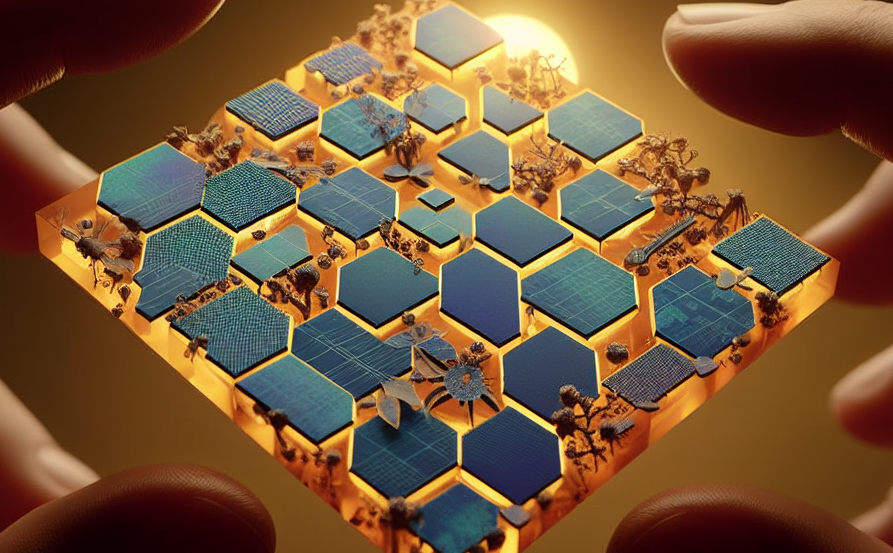In recent years, “The Future of Solar Energy Technology” has become an integral part of the global energy landscape, witnessing a remarkable surge in adoption driven by a confluence of factors. From strategic national goals to economic and environmental considerations, solar power is emerging as a beacon of hope for a sustainable and cleaner future.
Global Trends in Solar Energy Adoption
The world is experiencing a rapid shift towards solar energy, fueled by the growing awareness of the need for sustainable practices. Nations across the globe are setting ambitious renewable energy targets, with solar power playing a pivotal role in achieving these goals. This global trend underscores the urgency to transition to cleaner and more efficient energy sources.
Governments worldwide are strategically aligning their energy policies to reduce carbon footprints. By prioritizing solar energy, nations are not only addressing environmental concerns but also enhancing energy security. The integration of solar power into national energy portfolios reflects a commitment to a cleaner, more sustainable future.
The scales are tipping in favour of solar energy due to its dual advantage of economic viability and environmental sustainability. Businesses and consumers alike are recognizing the cost-effectiveness of solar power, coupled with the positive impact on the environment. The economic and environmental benefits are becoming powerful incentives for embracing solar solutions.
Shining Innovations: Tomorrow’s Solar Solutions

The future of solar energy is undergoing a transformative evolution, propelled by groundbreaking innovations that not only maximize efficiency but also redefine the possibilities of harnessing renewable energy. One of the key frontiers in this revolution lies in the continuous advancements of solar cell materials. Engineers and scientists are tirelessly pushing the boundaries of efficiency, developing new materials that enhance the absorption and conversion of sunlight into electricity.
The latest generation of solar cells is not only more efficient but also more cost-effective, making solar power increasingly accessible to a broader population. Innovations like perovskite solar cells, for instance, have shown remarkable potential for surpassing the efficiency limits of traditional silicon-based cells. These advancements pave the way for more widespread adoption of solar energy as a viable and sustainable power source.
Perovskite solar cells are a type of solar cell that uses a class of materials called perovskite compounds in their construction. These materials have a specific crystal structure that is similar to the mineral perovskite, from which the name is derived. The most common type of perovskite used in solar cells is a hybrid organic-inorganic lead or tin halide-based material.
However, the future of solar energy is not solely reliant on improvements in hardware. Artificial intelligence (AI) is playing a pivotal role in optimizing the performance of solar energy systems. Machine learning algorithms are being integrated into solar technologies, offering real-time monitoring and control, predictive maintenance, and adaptive optimization. This synergy between AI and solar power holds the promise of a revolutionary shift in how we harness and utilize sunlight.
Through sophisticated AI algorithms, solar installations can adapt to changing weather conditions, optimize energy production, and even predict potential issues before they occur. This not only maximizes the efficiency of solar energy systems but also ensures a more stable and reliable power supply. As AI continues to evolve, it opens up new frontiers for smart grids and energy management, enabling a seamless integration of solar power into the broader energy infrastructure.
Let’s start a conversation: How do you envision the integration of AI in solar energy shaping the future of sustainable power? What are your thoughts on the potential of perovskite solar cells in revolutionizing the efficiency of solar energy systems?
Transparent Solar Panels and Building Design

A groundbreaking advancement in solar technology has given rise to the advent of transparent solar panels, marking a transformative moment in both building design and energy generation. Unlike traditional solar panels that were often perceived as obtrusive, these innovative panels seamlessly integrate into architectural elements, presenting a harmonious blend of functionality and aesthetics. This dual-purpose solution not only facilitates the harvesting of solar energy but also preserves the transparency essential for natural light penetration.
The integration of transparent solar panels into building design represents a paradigm shift in sustainable architecture. Architects and urban planners can now envision structures that not only serve as functional spaces but also contribute actively to the generation of clean energy. This innovative approach holds the promise of transforming the urban landscape into a dynamic and energy-efficient environment.
The ability of transparent solar panels to capture solar energy while maintaining transparency opens up new possibilities for sustainable urban development. Skyscrapers, office buildings, and residential complexes can harness the power of the sun without compromising the aesthetic appeal or functionality of their designs. This breakthrough technology enables architects to reimagine cityscapes with structures that not only meet the needs of inhabitants but also actively participate in the global effort to transition towards renewable energy sources.
Moreover, the integration of transparent solar panels goes beyond mere energy generation—it fosters a connection between the built environment and nature. Occupants of such spaces can experience the benefits of natural light while simultaneously contributing to a cleaner, greener future. This symbiotic relationship between architecture and sustainability aligns with the growing demand for environmentally conscious living and working spaces.
Solar-Powered Mobility: A Revolution in Sustainable Transportation
The fusion of solar technology with transportation signifies a monumental stride towards eco-friendly mobility. Solar-powered vehicles, emblematic of innovation, harness sunlight to propel electric motors, offering an environmentally conscious alternative and reducing carbon emissions. Concurrently, solar-charging networks strategically located in urban centres and highways not only enhance the sustainability of electric vehicles but also contribute to energy independence. This transformative movement not only mitigates the environmental impact of conventional transportation but fosters a collective shift towards greener lifestyles, shaping a future where our modes of travel align with renewable energy principles for a more resilient and sustainable world.
Storing Sunshine: The Next Leap in Solar Energy
Addressing the intermittency of solar power, innovative storage solutions are emerging to store the abundant energy harvested during peak sunlight hours. Solar batteries and thermal systems are at the forefront of this revolution, ensuring a reliable and continuous power supply. This leap in energy storage technology is key to unlocking the full potential of solar energy.
Conclusion
As we stand on the brink of a solar revolution, the surge in solar energy adoption, alongside transformative innovations like perovskite solar cells, points to a bright and sustainable future. From transparent solar panels reshaping skylines to solar-powered transportation leading the way, the trajectory of solar energy promises a cleaner, greener, and more resilient world.



